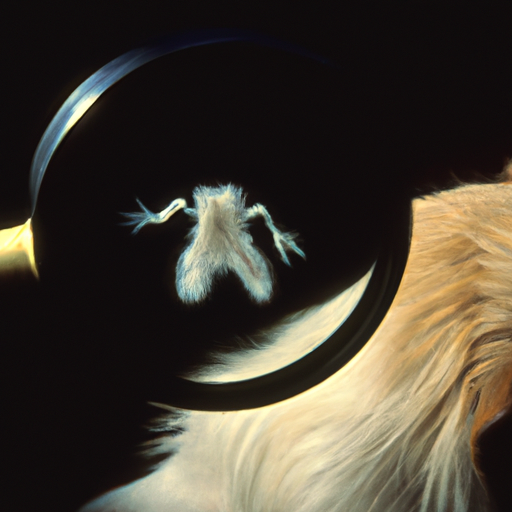As a caregiver to your beloved canine companion, understanding the complexities of their health is paramount. Among the myriad of concerns that dog owners often face, one of the most common, yet frequently overlooked, is the presence of fleas on dogs.
Understanding Fleas (H2)
Fleas, scientifically known as Siphonaptera, are tiny, flightless parasites. Their primary source of sustenance is the blood of their hosts, which sadly for our pets, often becomes dogs. They are tiny in size, generally between 1.5 to 3.3 mm long, and have bodies that are laterally compressed, allowing them to move through a host’s fur with ease.
Fleas are not just a nuisance; they can be carriers of diseases and can cause serious health issues for your dog if left unchecked.
How Dogs Get Fleas (H2)
Fleas are remarkably resilient creatures. They can survive in a variety of environments and can jump distances up to 100 times their body length, making them highly efficient at finding and infesting a host.
- Environment: Fleas thrive in warm, humid environments. They can be found in grass, carpet, and anywhere warm and cozy.
- Other Infested Animals: Your dog can get fleas by coming into contact with another infested animal. This could be another dog, a cat, or even wildlife like raccoons or rabbits.
- Humans: Yes, even you can unwittingly bring fleas into your home on your clothing or shoes.
Recognizing Flea Infestations (H2)
Recognizing a flea infestation early can be critical in preventing further spread and harm to your dog. Here are some tell-tale signs that your dog may have fleas:
- Excessive scratching, licking or biting at the skin
- Hair loss
- Flea eggs or droppings (which look like dark specks) in the dog’s fur
- Allergic dermatitis
- Tapeworms (which can be transmitted by fleas)
Treating and Preventing Flea Infestations (H2)
Effective flea treatment and prevention involves a multi-pronged approach:
- Topical Treatments: These are applied directly to your dog’s skin and can kill adult fleas, larvae, and eggs.
- Oral Medications: These are ingested by your dog and can kill adult fleas and prevent flea larvae from developing.
- Flea Collars: These can repel or kill fleas for several months.
- Environmental Control: Regularly clean and vacuum your home, wash your pet’s bedding, and maintain your yard to reduce flea populations.
| Treatment Type | Pros | Cons |
|---|---|---|
| Topical | Kills all life stages of fleas | Can be messy; Some dogs may have reactions |
| Oral | Fast-acting; easy to administer | Must be given regularly |
| Flea Collars | Long-lasting; repels fleas | Some dogs may be allergic |
| Environmental | Reduces overall flea population | Requires regular, ongoing maintenance |
Frequently Asked Questions (H2)
Q: How long do fleas live on a dog?
A: Adult fleas can live up to 100 days on a dog, assuming conditions are favorable for survival.
Q: Can fleas live on humans?
A: While fleas can bite humans, they cannot live and reproduce on human blood.
Q: How can I tell if my dog has fleas?
A: Look for signs of excessive scratching, biting, or licking. You may also notice flea eggs or droppings in your dog’s fur.
Q: Can my dog get sick from fleas?
A: Yes, fleas can transmit diseases and cause allergic reactions, resulting in health issues for your dog.
Q: How often should I treat my dog for fleas?
A: How often you should treat your dog depends on the type of preventative you are using. Always follow the instructions on the product label.
In conclusion, fleas are a common but preventable issue for dogs. As a caregiver to your furry friend, being informed about fleas – their lifestyle, how dogs get them, how to recognize, treat, and prevent infestations – is key to ensuring a healthy, happy life for your beloved pet.



